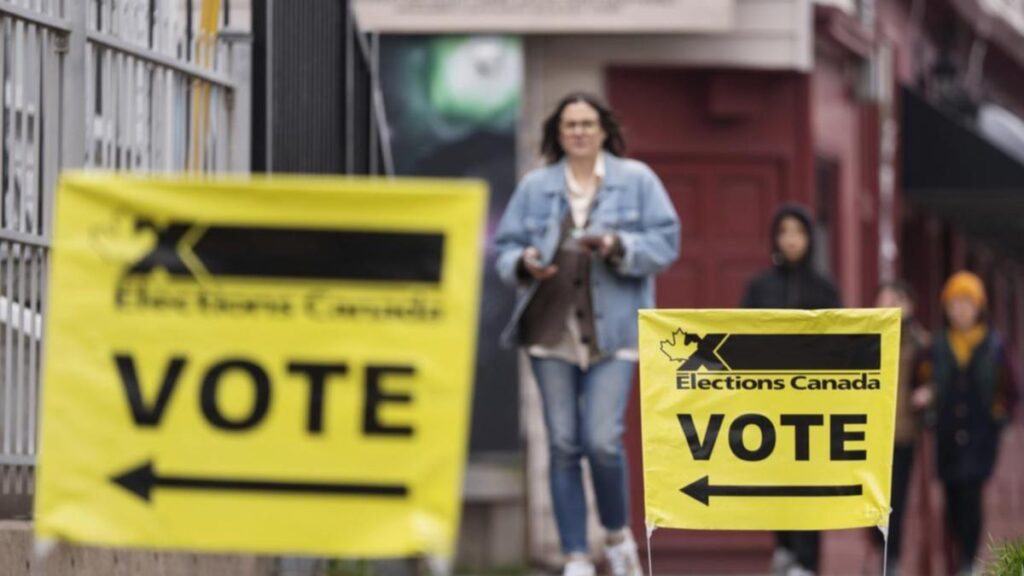Canadians are heading to the polls following an election campaign heavily influenced by US President Donald Trump’s tariffs and ideas about making Canada the 51st state.
Trump’s statements sparked a surge of national pride, boosting support for Liberal Prime Minister Mark Carney, a newcomer to politics who has previously led two central banks for G7 countries.
The campaign concluded on a tragic note when a man drove an SUV into a crowd at a Filipino community event in Vancouver, resulting in at least 11 deaths and numerous injuries.
Carney paused his campaign briefly, and both he and Conservative leader Pierre Poilievre acknowledged the tragedy during their final events. Duane Bratt, a political science professor at Mount Royal University in Calgary, believes the incident won’t sway voter turnout.
A CTV News-Globe and Mail-Nanos poll from Sunday indicated that Carney’s Liberals have a 2.7-point advantage over Poilievre’s Conservatives. The poll reported Liberal support at 42.6% compared to 39.9% for the Conservatives.
An EKOS poll released the same day suggested a six-point lead for the Liberals, forecasting they could secure a majority in the 343-seat House of Commons without needing smaller party support to govern.
Trump resurfaced as a campaign factor last week, threatening a 25% tariff on Canadian cars, stating that America doesn’t want them. He also suggested he might use “economic force” to make Canada a US state.
Carney has pointed to his economic experience as a qualification for addressing Trump’s challenges, while Poilievre has focused on pressing issues like living costs, crime, and a housing crisis.
On Monday, Trump reiterated his desire for Canada to join the US as the 51st state.
“Best of luck to the wonderful people of Canada,” he stated.
“Choose the leader who can halve your taxes, boost your military strength for free to the highest levels globally, and aim for growth in your industries—like cars, steel, aluminum, lumber, and energy—without tariffs or taxes if Canada becomes the beloved 51st state.”
At a rally on Sunday near the Ambassador Bridge, which has linked Windsor’s auto industry with Detroit for nearly a century, Carney cited the bridge as a representation of peace and collaboration.
“This situation has changed, and we didn’t instigate it… President Trump did,” Carney remarked.
“He has initiated a trade war that has fractured the global economy and betrayed us in the process.”
Poilievre has drawn more young voters than typical for the Conservatives by emphasizing his focus on the cost of living and crime rates.
“Time’s running out; there’s only one more day to bring change so that Canadians can afford necessities and feel safe in their communities,” Poilievre urged at a rally in Oakville, Ontario on Sunday.
Carney has aimed to separate himself from former Liberal Prime Minister Justin Trudeau, who had lost popularity and announced his resignation in January after almost ten years in office, when the Conservatives held a 20-point lead in polls.
The economy showed signs of recovery before the US imposed tariffs.
For a party to form a majority government, they need to secure 172 seats.
Much of the Conservative base is located in rural regions, where fewer seats are available.
During his final week of campaigning, Carney visited over 20 cities and appeared weary but tried to energize crowds of 1,000 to 2,000 at various events, according to party estimates.
Carney’s events mainly drew older Canadians, showcasing signs such as “Jamais Le 51” (“Never 51”) and “Un Canada Fort” (“A Strong Canada”).
Statements about Trump were met with boos from the crowd.
Contrarily, Poilievre’s events have attracted larger audiences and have referenced Trump less frequently.
Results from the election will begin to emerge after polls close at varying times on Monday evening, as ballots are manually counted.


